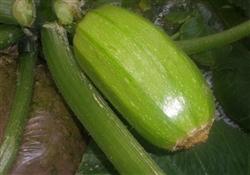Causes and countermeasures of cucurbit melon in greenhouse in early spring

Summer squash cultivation in greenhouse in early spring, easy to appear fruit expansion midway stop, yellowing, wilting. Finally, it becomes shriveled, and this symptom may occur before and after flowering, commonly known as melons. The reasons for melons are as follows: 1. Early spring cultivation, leaf assimilation function decreased, plant photosynthetic accumulation less. 2. Because zucchini is a cross-pollinated vegetable, pollen development is poor under low temperature and high humidity, and it is not easy to distribute pollen. Female flowers cannot accept pollen fertilization and lead to melons. 3. Greenhouse cultivation in early spring, affected by low temperature and short sunshine, leads to more female flowers and less male flowers in zucchini, thus causing poor pollination and melons. Some varieties of low temperature pollen development is incomplete, will also cause melons. Control methods: First of all, to cultivate healthy plants, promote the growth and development of plants. Secondly, it is necessary to control the night temperature to prevent the night temperature from being too high to reduce respiratory consumption; at the same time, carbon dioxide fertilizer should be applied before ventilation to promote assimilation. Third, artificial pollination or hormone treatment. Artificial pollination should be carried out before 9 a.m. on a sunny day. The male flowers in full bloom on that day should be picked off, the petals torn off, and the whole stamens placed directly on the stigma of the male flowers for artificial pollination.
- Prev

to prevent zucchini from dropping flowers and fruits.
Zucchini strips grow short and thick, which will seriously affect the quality of zucchini and reduce the income of vegetable farmers. Experts suggest that in winter and spring season, zucchini short and thick melon should be prevented early. In winter and spring, the greenhouse temperature and ground temperature were lower, the light was weak, the photosynthetic efficiency of zucchini was low, and the nutrient accumulation of plant body was less. Plus...
- Next

The reason why summer squash in greenhouse turns into melon in early spring
Summer squash cultivation in greenhouse in early spring, easy to appear fruit expansion midway stop, yellowing, wilting. Finally, it becomes shriveled, which may occur before and after flowering, commonly known as melons. The causes of melons mel (2)Due to...
Related
- Where is it suitable to grow horseradish in China? it is expected to see the middle altitude horseradish in Alishan.
- How to prevent tomato virus disease reasonably? (Control methods included)
- Many people like to plant towel gourd on the balcony. What are the main points of this method and management?
- What crops can chili peppers be mixed with?
- Fertilization techniques and matters needing attention in Tomato
- What are the grafting techniques for peach seedlings in spring?
- Harm and control methods of root swelling disease of Chinese cabbage
- What are the pests of sweet potatoes? How to prevent and cure it?
- Symptoms, causes and Control methods of navel Rot in Tomato
- The cause of "Cucumber rotten bibcock" in Farmers' planting Cucumber and its Control Plan

